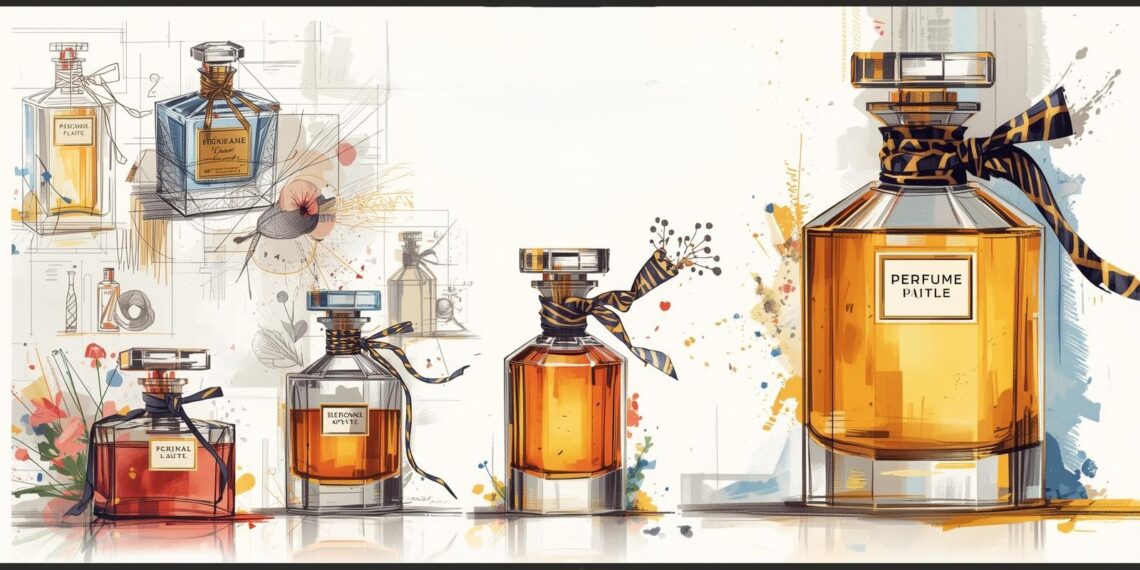The art of perfume creation is a complex and fascinating journey that blends science, creativity, and tradition. It begins with an idea and ends with a beautifully crafted fragrance that can evoke emotions and memories. In this article, we will explore the journey of perfume creation from concept to bottle, shedding light on the intricate processes involved and the cultural significance of this timeless craft.
Perfume has been a part of human culture for thousands of years, with its roots tracing back to ancient civilizations. The Egyptians, for example, used perfumes in religious rituals and daily life, while the Greeks and Romans applied fragrances to enhance their personal allure. Today, perfume remains an essential aspect of self-expression and identity, symbolizing personal taste and style.
In recent years, the wellness industry has significantly influenced the perfume market. Consumers are increasingly drawn to fragrances that offer more than just a pleasant scent; they seek products that promote well-being and align with their values. This shift has led to a rise in demand for natural, sustainable, and ethically sourced ingredients in perfume creation.
The creation of a perfume involves several key stages: concept development, ingredient selection, blending, aging, and bottling. Each stage requires precision, expertise, and a deep understanding of the materials used.
The first step in perfume creation is developing a concept. This involves identifying the desired mood, theme, or story that the fragrance will convey. Perfumers, also known as “noses,” work closely with brand developers to translate these ideas into olfactory experiences.
Once the concept is defined, the next step is selecting the right ingredients. Essential oils are the primary building blocks of a perfume. These oils are extracted from natural sources such as flowers, fruits, leaves, and resins through various methods, including steam distillation, cold pressing, and solvent extraction.
- Steam Distillation: This is the most common method for extracting essential oils. It involves passing steam through plant material to release volatile compounds, which are then condensed into a liquid form.
- Cold Pressing: Typically used for citrus fruits, this method involves mechanically pressing the fruit to extract the oil.
- Solvent Extraction: Used for delicate flowers like jasmine, this method employs solvents to dissolve the fragrant compounds before separating them from the plant material.
An intriguing aspect of perfume creation is the use of ambergris, a rare substance produced by sperm whales. Ambergris forms when a whale secretes a fatty substance to protect its digestive tract from sharp objects. Over time, this substance hardens and washes ashore, where it is collected for use in high-end perfumes. Known for its unique scent and fixative properties, ambergris has been prized by perfumers for centuries.

However, due to ethical and environmental concerns, the use of ambergris has declined, with many perfumers opting for synthetic alternatives.
With the ingredients selected, perfumers begin the delicate process of blending. This involves combining various essential oils in specific proportions to create a harmonious composition. The skill of the perfumer lies in their ability to balance these elements, ensuring that the top, middle, and base notes of the fragrance work together seamlessly.
- Top Notes: These are the initial scents perceived when a perfume is applied. They are typically light and fresh, designed to make a strong first impression.
- Middle Notes: Also known as heart notes, these emerge once the top notes fade, providing the main body of the fragrance.
- Base Notes: These are the lasting scents that linger on the skin, providing depth and longevity to the perfume.
After blending, the perfume undergoes an aging process, which allows the ingredients to meld and mature. This can take anywhere from a few weeks to several months, depending on the complexity of the composition. Once aged, the fragrance is filtered and bottled, ready to be experienced by consumers.
Perfume holds a special place in human culture, serving as a powerful tool for self-expression and connection. It transcends language and cultural barriers, evoking emotions and memories that are deeply personal yet universally understood.
In today’s wellness-oriented society, perfume has evolved beyond a mere accessory to become an integral part of one’s identity. Consumers seek fragrances that resonate with their values and lifestyle, prompting the industry to embrace transparency, sustainability, and innovation.
As the wellness industry continues to grow, we can expect further innovations in perfume creation. The demand for natural and sustainable ingredients will likely increase, driving perfumers to explore new methods and materials. Additionally, advances in technology may lead to more personalized fragrance experiences, allowing consumers to create scents tailored to their unique preferences.
The journey of perfume creation is a testament to the artistry and science that underpin this timeless craft. From concept to bottle, each stage of the process reflects a deep understanding of the materials and the cultural significance of fragrance. As the wellness industry continues to shape consumer preferences, the future of perfume creation promises to be as dynamic and innovative as the scents it produces.




